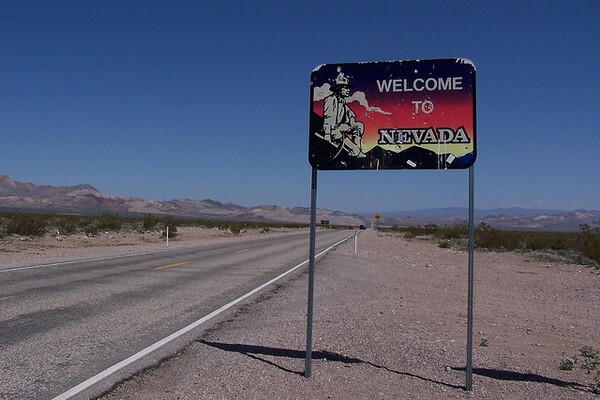Pressure Mounts for California to Import Renewable Energy

Now entering the California ISO's newest territory | Photo: J. Stephen Conn/Flickr/Creative Commons License
Due to a combination of technical issues with the grid and Jerry Brown's policy, California has officially been planning to meet most of its Renewable Portfolio Standard requirements with renewable energy generated inside state lines.
That policy has been prompting complaints from renewable energy providers outside California for some time. Now, renewables companies in Nevada are talking about having tapped their own state's market out: without sales to California, they say, their industry has grown as much as it can.
In an article published Monday in the Reno Gazette Journal, reporter Jason Hidalgo relayed concerns from the Desert Research Institute Energy Expo, held the weekend before last in Reno, that Nevada's in-state demand for renewable energy is close to met, meaning that companies are about to run out of incentive to develop more capacity unless they can find buyers for the power.
In the western U.S., that pretty much means California; most other states consume far less power than does the Golden State. California consumes about 259 terawatt-hours of power a year, more than the states of Arizona, Nevada, Utah, Oregon, New Mexico, Idaho, and Wyoming combined.
Nevada has made incredible strides in power self-sufficiency, reports Hidalgo. Six years ago, the state bought 60% of its electricity from neighboring states. This year, Nevadan utilities only buy out-of-state power during peak periods, or when the cost is too low for them not to. Renewable energy capacity in the state rose from 300 megawatts in 2009 to over 800 megawatts this year, and utility NV Energy expects that to top 1,100 megawatts by 2014.
But given Nevada's Renewable Portfolio Standard, which is somewhat less stringent than California's, that capacity may more than meet Nevada's demand for renewable power.
"I think of Nevada being similar to Alaska and Texas where they have more oil than their state can take and turned that into an engine that fuels their economies," NV Energy's president and CEO Michael Yackira told Hidalgo. "We have an abundance of renewable energy in the state, probably more per capita than any other state."
Much of Nevada's renewable capacity is geothermal, and geothermal's higher up-front development costs make it more susceptible to a market slowdown than solar or wind. Hiudalgo reports that the geothermal sector made its concerns quite clear during the meeting:
We have produced too much and NV Energy is full," said Paul Thomsen, Ormat's director of policy and business development, said Paul Thomsen, Ormat's director of policy and business development, during the joint expo held by DRI and the Nevada Institute for Renewable Energy Commercialization. "If the utility cannot take this power, then we need to be able to export it."
One need not feel too sorry for Ormat: the company is heavily involved in California's geothermal industry, with facilities in Imperial and Mono Counties.
It may be that the combination of California's hungry power market and Nevada's lax approach to environmental regulation and taxes will prompt additional renewables development on the Nevada side of the line for power sales to California. Now that the California Independent System Operator has added southwest Nevada's Valley Electric Association as a member, there's now a large swath of Nevada now enjoying fewer technical obstacles to selling power to California utilities. We may yet see the renewable energy equivalent of the Maquiladoras that line the Mexican side of the U.S. border, as companies build projects in that border strip of Nevada that belongs to the California grid -- just as manufacturers did in Mexico to take advantage of lower costs and fewer rules.
ReWire is dedicated to covering renewable energy in California. Keep in touch by liking us on Facebook, and help shape our editorial direction by taking this quick survey here.


